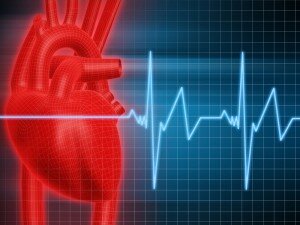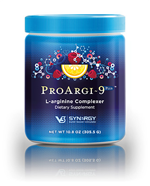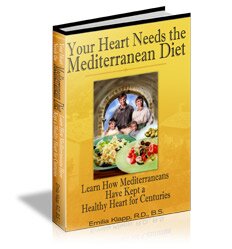 For the United States it is estimated that heart disease causes approximately 1.2 million heart attacks per year. More than 40 percent of those initial heart attacks will result in death. According to the World Health Organization, cardiovascular disease results in 17.5 million deaths worldwide. Heart disease is the single greatest cause of death in both the United States and the world accounting for over half of all deaths.
For the United States it is estimated that heart disease causes approximately 1.2 million heart attacks per year. More than 40 percent of those initial heart attacks will result in death. According to the World Health Organization, cardiovascular disease results in 17.5 million deaths worldwide. Heart disease is the single greatest cause of death in both the United States and the world accounting for over half of all deaths.
Given this stark reality it is important to clearly know your major risk factors. According to the American Heart Association, there are 10 leading risk factors for heart disease. They are:
- Age – According to mortuary tables, more than 83% of the people who die from heart disease are 65 or older.
- Race – If you are African Americans, Mexican American, American Indian, native Hawaiian or Asian American then your risk is higher than the Caucasian community.
- Sex – Men have both a greater risk of heart attack and having it at an earlier age than women. However, after menopause a woman’s death rate increases but not to the level of men.
- Family History – There is a close association for heart disease if your parents or close relatives have some form of heart disease. The real question is whether it is genetic or lifestyle.
- Smoking – Your risk for developing heart disease is two to four times greater than those who do not smoke.
- High Blood Pressure – One out of every three Americans have high blood pressure. Not only does it increase your risk for heart attacks and kidney failure but it is the number one risk factor for stroke.
- High Cholesterol – As your blood cholesterol increases so does your risk for heart disease.
- Diabetes – This disease seriously increases your risk for heart disease since approximately 65% of people with diabetes die from some form of cardiovascular disease.
- Sedentary Lifestyle – The greater your inactivity the greater your risk.
- Overweight/Obesity – There is a direct correlation with excess body fat, especially fat around the midsection, and the increased risk for heart disease and stroke even if there are no additional risk factors.
4 Risk Factors of Heart Disease You Have No Control Over!
Age, race, sex, and family history are considered to be risk factors that you have no control over. While you can’t change any of them, I believe you can limit their effects on heart disease. For example:
Age – There can be a significant difference between your chronological age and your biological age. You can take steps to slow down the aging process and even turn back the biological age clock. My website www.Aging-No-More.com provides practical and effective ways to age youthfully.
Race – Certain population groups, like African Americans, have a much higher risk for heart disease than other groups. Part of this is lifestyle choices and part of this is genetics. Lifestyle choices can be changed and some genetic factors can be moderated to reduce your risk.
Sex – At one time men clearly dominated the area of heart disease. Not any more. Women have caught up with men. The rate of death for women from heart disease is 12 times that of breast cancer. So, is it gender or lifestyle that contributes to the risk of heart disease?
Family History – If your family history is because of genetics, then there is not much you can do except concentrate on the 6 key risk factors that you have control over. If your family history is because of lifestyle, then you have a tremendous opportunity to change this; which brings us to the rest of this article.
6 Major Risk Factors of Heart Disease That You Can Control!
I’ve ranked these 6 major risk factors for heart disease based on what I believe are the most important to address first. They are:
High Blood Pressure – This is the most important area to gain control over. If you do not know what your current blood pressure reading is or if you have not had your blood pressure taken in the last 6 months, then get to a local pharmacist, health clinic, or qualified medical professional. Have them take your blood pressure. This will be your base line and will help to determine what your next step should be.
Your blood pressure will be given to you in two numbers such as 110/70 mm Hg. Your systolic number is the first and highest number. If this number is 140 or above then you have high blood pressure! Your diastolic number is the second and lowest number. If this number is 90 or above then you have high blood pressure! And, if both numbers are above 140/90 then you have high blood pressure. The higher above this threshold the greater your health risk.
High blood pressure will damage your heart and your endothelial cells. Your endothelial cells are critical to cardiovascular health. They also play a major role in controlling your blood pressure because they produce a molecule called nitric oxide. Nitric oxide regulates the muscle tone of your blood vessels. The article “7 Natural Steps to Take the Hyper out of Hypertension!” will provide you with some simple but key natural adjustments to help you control your blood pressure.
Smoking – I debated whether to place this first or second on the list. Smoking is equal to or greater than high blood pressure. But monitoring and controlling your blood pressure is certainly a lot easier for a person than to stop smoking. For this reason alone I put high blood pressure as the first and most important risk to address. Next is smoking.
Most people equate smoking with cancer. While this association is true smoking is also the number one risk factor for heart disease, stroke, and cardiovascular disease. It is estimated that 40% of all cardiovascular deaths are due to smoking.
The carcinogenic components in tobacco damage the endothelial cells that line the walls of your arteries. This affects your body’s ability to produce nitric oxide, which in turn affects your blood pressure. The carbon monoxide from the burned tobacco interferes with the blood’s ability to carry oxygen. This increases your heart rate and can raise your systolic blood pressure. Smoking also constricts the blood vessels in your arms and legs. This increases the resistance to blood flow, which causes your diastolic blood pressure to increase.
I realize that this is a nasty habit that is extremely hard to break. Part of the process is having a motivation greater than the habit. If your very life isn’t motivation enough, then maybe for the men your sex life is! Your endothelial cells control your nitric oxide production. Your nitric oxide levels control an erection. No nitric oxide no sex! Every puff on your cigarette is destroying your endothelial cells, which lowers your nitric oxide level and reduces your chances of having good sex.
Overweight/Obesity – The health risks from being overweight and/or obese have now equaled, and some feel overtaken, the health risks from smoking. According to the National Center for Health Statistics, 66% of adults age 20 years and over are overweight with 32% clinically obese. That means that 2 out of every 3 people you meet are going to be overweight with half of them being obese. With this dangerous rise in excess fat weight there has been a rise in high blood pressure and an epidemic increase in diabetes.
Because so many people have tried and failed at dieting, they see this category as hopeless. Diets are by their very nature restrictive and unproductive for long term weight loss. So stop trying to diet. Learn how to apply weight management techniques that can have a profound effect on your health and blood pressure. Most people are only 250 calories per day away from stopping their weight gain. That’s the difference between a can of regular soda versus a glass of water. Or, a large order of French fries versus a small order of French fries. The article “The Secret to Weight Loss!” can help you in this area.
Diabetes – The greater your percent body fat, the more out of balance your hormonal level will be and the harder it will be for your body to stabilize its blood sugar levels. Most people who get a good handle on their weight and their dietary choices will see a drastic improvement in their blood sugar levels to help prevent type II diabetes. This is not to say that diabetes by itself is not a health risk that shouldn’t be addressed except through diet. What I am saying is that the majority of those with adult onset type II diabetes could prevent and/or reverse the process if they lost the fat and ate a diet that supported the health of their body rather than satisfying their cravings.
Also, high blood sugar levels cause oxidative stress or damage to the endothelial cells. This results in most of the complications associated with diabetes. I’m preparing a series of videos to help you understand this area. Learning how to properly repair and nourish your endothelial cells to improve their ability to produce nitric oxide – the master signaling molecule of your cardiovascular system – is key to preventing heart disease for diabetics.
High Cholesterol – There are two main types of cholesterol that you and your doctor should be concerned about. Your total cholesterol reading is a composite of these two. They are high density cholesterol or HDL and low density cholesterol or LDL. Of the total cholesterol reading the LDL will be the higher amount. Unfortunately your LDL is what also harms your cardiovascular system. Your goal is to lower your bad cholesterol which is your LDL and raise the level of your good cholesterol which is your HDL.
Your LDL cholesterol damages the intercellular junctions between the endothelial cells allowing deposits to build up. This causes the smooth and flexible lining of your blood vessels to become rough and hard leading to the disease commonly called arteriosclerosis or atherosclerosis. As this process continues over time, the deposits or plaques become larger which narrows the interior of the blood vessel making it harder for blood to pass through. This increases resistance to blood flow, which can cause your blood pressure to increase.
The narrowing of your blood vessels also causes blood turbulence that can lead to the formation of blood clots. These blood clots, if large enough or if they pass through too narrow of an opening, can eventually lodge themselves in a blood vessel causing a blockage. When this happens in the heart we call it a heart attack. When it happens in the brain it is called a stroke.
A simple, but profound method to control your cholesterol is to make sure you consume an adequate amount of soluble fiber. Soluble fiber is found mainly in fruits, vegetables, dry beans, nuts, seeds, and whole grains. Soluble fiber not only lowers LDL cholesterol but also raises HDL cholesterol. One study examined this relationship between soluble fiber and the risk of heart disease. This study included 9,632 men and women over a 19 year period. It showed that consuming dry beans four times or more per week, compared with less than once a week, lowered the risk of heart disease by 22 percent.
Sedentary Lifestyle – You were designed to move and exercise. Properly applied exercise will strengthen your heart muscle, increase the diameter of the coronary arteries and improve your lung function. As the heart muscle is strengthened it usually improves the efficiency of its contraction. This results in a greater volume of blood being pushed out of the heart to improve blood flow.
Exercise can also improve capillary function and help to build additional capillary beds. This decreases resistance to blood flow to help lower your diastolic blood pressure. Most studies show that at least 30 minutes of moderate physical activity done 3 to 5 days per week can have a positive effect on your cardiovascular health. If you are not currently exercising then please check with a qualified health professional before starting your exercise program.
Conclusion About Your Risk Factors For Heart Disease!
Your ability to reduce your risk factors for heart disease is a lot greater than what you may have previously thought. In today’s world of pharmaceutical advertising people get the general impression that they need to see their doctor for the right kind of pill to solve their health issue. This is not to say that medication doesn’t have an important application to your overall health. However, your food and lifestyle choices have more to do with your health and the quality of your life than any other factor. It is why your lifestyle choices can have such a profound effect on restoring your health and helping you reduce your risk factors for heart disease.
Together we can work to save a million lives!
Dan Hammer
Dan Hammer has a background in biology, chemistry, and exercise physiology. He used to run one of the largest health club operations in the Chicagoland area and has been helping people with their wellness issues for more than 25 years.




Thanks for the great education Dan. For as much as I have been learning about the relationship of Gout and Heart Disease, you’ve really brought a lot more home for me.
“Nitric oxide regulates the muscle tone of your blood vessels.” That provided a whole new visual for me to wrap my mind around. Thanks again, Bert
Hi Bert,
I’m glad this helped. There are many with gout who also need to address the damage done to their endothelial cells. By repairing this damage and properly nourishing their endothelium they will be able to improve their nitric oxide production. Since nitric oxide is the master signaling molecule of the entire cardiovascular system this becomes pretty important.
Dan